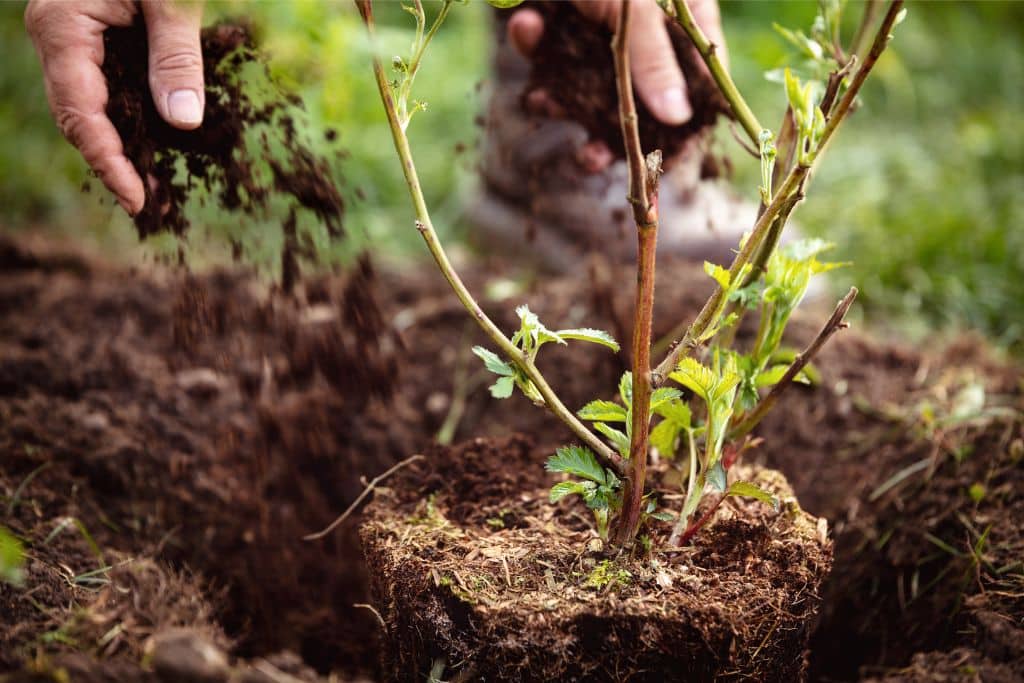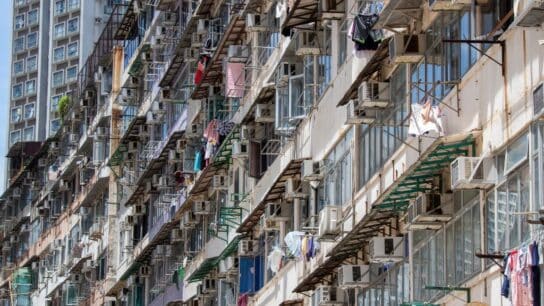Community-based conservation strategies are proved to have a positive impact on minimizing or even eliminating external negative impacts of traditional conservation projects, such as forced displacement, thanks to collaborative and integrated co-management, equitably distributed benefits from conservation, and increased community empowerment and participation.
—
By Shannon Magnin
From the hottest year on record, to the apocalyptic fires in Los Angeles and US President Donald Trump’s radical efforts to undermine climate action and downplay the gravity of the crisis our planet finds itself in, headlines have been quite daunting lately.
It is not uncommon to have conversations with young people everywhere expressing their eco-grief and depression regarding the state of our planet. Globally, citizens continue to struggle with the current state of our environment, left feeling hopeless at the inaction of those who lived before and the current climate change deniers refusing to help now. Everyday, we hear about new climate records, species extinctions, horrific natural disasters, and world leaders failing to address the daunting reality of the climate crisis we are staring down. Those paying attention are left questioning, “what can I do?”
Community-based living is an accessible solution.
Seemingly simple, this alternative lifestyle approach is anything but. While community-based conservation has been long reported on, community-based living has not been explored thoroughly as a conservation strategy. Also known as place-based living, ecovillages, or intentional communities, community-based living involves living with a group of people working to minimize environmental impact. Residents of these communities often share values and work together to share resources. Community investment in solar panels, designs built for less reliance on cars, low waste systems, and collectively shared spaces and resources helps community living minimize costs and overall resource use. This alternative lifestyle has been seen growing momentum globally with an increasing focus on sustainability, environmental impact, human well-being, and an affordable life at a local scale; ultimately eliminating dependence on governments, waiting for them to finally demonstrate climate due diligence.
Too often, environmental organizations target conservation efforts at a specific issue. However, discovering the way we live can bolster ecosystem services in a mutually beneficial capacity with the complex environmental problems we need to address is revolutionary for the future of conservation.
So, what does community-based living look like, and why, or how, is it a viable solution to conservation?
The Origins
A prime example of the success of community-based living can be shown through New Mexico’s Earthships, pioneered by architect Micheal Reynoldsin the 1970s. Utilizing found and recycled materials such as car tires and glass bottles, this sustainable and reused “biotecture” approach provides a new blueprint for building and living in community. It has revolutionized how we can think of conservation and the future of environmental preservation. Gaining momentum, Reynolds reflects how the Earthships were once “just two or three homes” turning into “two or three communities.”
The Earthship community is built to be self-sufficient, minimize ecological footprints, and produce the majority of food, energy, and water needs on site. Native habitat, intentional land management, and mindful ecosystem management enable the biotecture Earthships to mutually benefit both people and nature together. Through this creative and innovative building approach, a new vision emerges: humans living in a mutually beneficial capacity with nature, not straining our finite ecological resources, competing with each other and damaging our planet. In other words, we can live in conservation.

But this is just one example of how sustainability and conservation can be built into our living communities. More examples of community-based living include Dancing Rabbit Ecovillage in Missouri, Santa Barbara Biotecture in California, and the Findhorn Ecovillage in Scotland.
Truly demonstrating the growing number of community-living sites, US-based Foundation for Intentional Community provides data and resources for the web of community-based living sites internationally. These communities’ locations vary from remote forest sites to suburban co-housing establishments and intentional city community living. Each ecovillage and community-based living location looks different, intentionally designed for the benefit of its residents and surrounding ecosystems.

Accessibility and Affordability
In searching for the gaps and holes to ultimately defeat this newfound hope for community and planet, it is those probing doubts about community living’s affordability and accessibility that contain the information to unlock the answers. The accessibility concerns harbored are further cause to embrace these visions of community and sustainability.
More and more young adults are moving home, often referred to as the “boomerang” generation, amid looming housing crises and rising food prices.
Community-based living can help the youth and future generations achieve human well-being and find conservation solutions in tandem. The cost barrier is lower due to collective investment, the fact that most food and water needs are met on site, and that there are many organized communities already established. Knowledge gaps and experience barriers are bridged through the wealth of shared resources and the help of all people in the community, learning and growing from each other. It is this connection and realization that brings in a flood of newfound hope, reimagining a different kind of accessible, affordable, and attainable future.
Communities like Lost Valley Educational Center in Dexter, Oregon, demonstrate how housing affordability and human well-being are prioritized in tandem with environmental well-being. Here, affordable and sustainable housing and mindful land stewardship go hand-in-hand. One exists because of the presence of the other. Their community governance and design creates systems that have a flourishing adaptable capacity, beneficial development for climate change mitigation, and an expanded positive impact on local ecosystems and biodiversity.
The Case For Community Living
While current conservation efforts are making a positive impact on the environment, climate change impacts are intensifying at terrifying rates. Our current actions, and inactions, are insufficient in changing our trajectory toward the dangerous decline of our planet.
Oftentimes, conservation efforts focus on limiting or restricting resource use, disproportionately impacting or displacing disadvantaged communities and negatively impacting change in conservation attitudes and behaviors. Such is the case with Indigenous peoples and National Parks in the US and the establishment of protected areas and displacement of marginalized and impoverished communities to make space for the higher ranking national priority of environmental preservation. The cost of establishing US national Parks or protected areas historically and presently displaces marginalized communities inequitably.
Community-based conservation strategies, however, are proved to have a positive impact on minimizing or even eliminating external negative impacts of more traditional conservation projects, such as displacement, thanks to collaborative and integrated co-management, equitably distributed benefits from conservation, and increased community empowerment and participation.
Community-based living is one of these community-based conservation strategies. It shifts the conservation narrative away from exclusionary practices, bringing the power of positive impact back to the local population.
The reality is, we must start to embrace more alternatives and take on this conservation crisis as a collective. We must evolve. It is not asked that you give up your house, your car, your sense of independence. It is asked that you embrace the idea and reality of what it could mean to gain community, to lower your cost of living while lowering your environmental impact, to afford resources you need to live a flourishing life, and to live in and with a welcoming community. It is asked that you embrace the potential of community-based living for conservation.
—
About the author: Shannon Magnin is a Masters student in Conservation Leadership at Colorado State University. They graduated from San Francisco State University with an M.S. in Environmental Studies and a minor in Geography. They are an avid outdoor recreator and have spent time as an outdoor trip guide. As a queer individual, their identity has helped them navigate the complexities of human interactions and the environmental crisis we face, ultimately focusing on the importance of community and a systems based approach.
This story is funded by readers like you
Our non-profit newsroom provides climate coverage free of charge and advertising. Your one-off or monthly donations play a crucial role in supporting our operations, expanding our reach, and maintaining our editorial independence.
About EO | Mission Statement | Impact & Reach | Write for us
💡How can I contribute to a more sustainable planet?
- 🗳️ Vote for climate action: Exercise your democratic rights by supporting candidates and policies that prioritize climate change mitigation and environmental protection. Stay informed with Earth.Org’s election coverage.
- 👣 Reduce your carbon footprint: Make conscious choices to reduce your carbon footprint. Opt for renewable energy sources, conserve energy at home, use public transportation or carpool, and embrace sustainable practices like recycling and composting.
- 💰 Support environmental organizations: Join forces with organizations like Earth.Org and its NGO partners, dedicated to educating the public on environmental issues and solutions, supporting conservation efforts, holding those responsible accountable, and advocating for effective environmental solutions. Your support can amplify their efforts and drive positive change.
- 🌱 Embrace sustainable habits: Make sustainable choices in your everyday life. Reduce single-use plastics, choose eco-friendly products, prioritize a plant-based diet and reduce meat consumption, and opt for sustainable fashion and transportation. Small changes can have a big impact.
- 💬 Be vocal, engage and educate others: Spread awareness about the climate crisis and the importance of environmental stewardship. Engage in conversations, share information, and inspire others to take action. Together, we can create a global movement for a sustainable future.
- 🪧 Stand with climate activists: Show your support for activists on the frontlines of climate action. Attend peaceful protests, rallies, and marches, or join online campaigns to raise awareness and demand policy changes. By amplifying their voices, you contribute to building a stronger movement for climate justice and a sustainable future.
For more actionable steps, visit our ‘What Can I do?‘ page.














